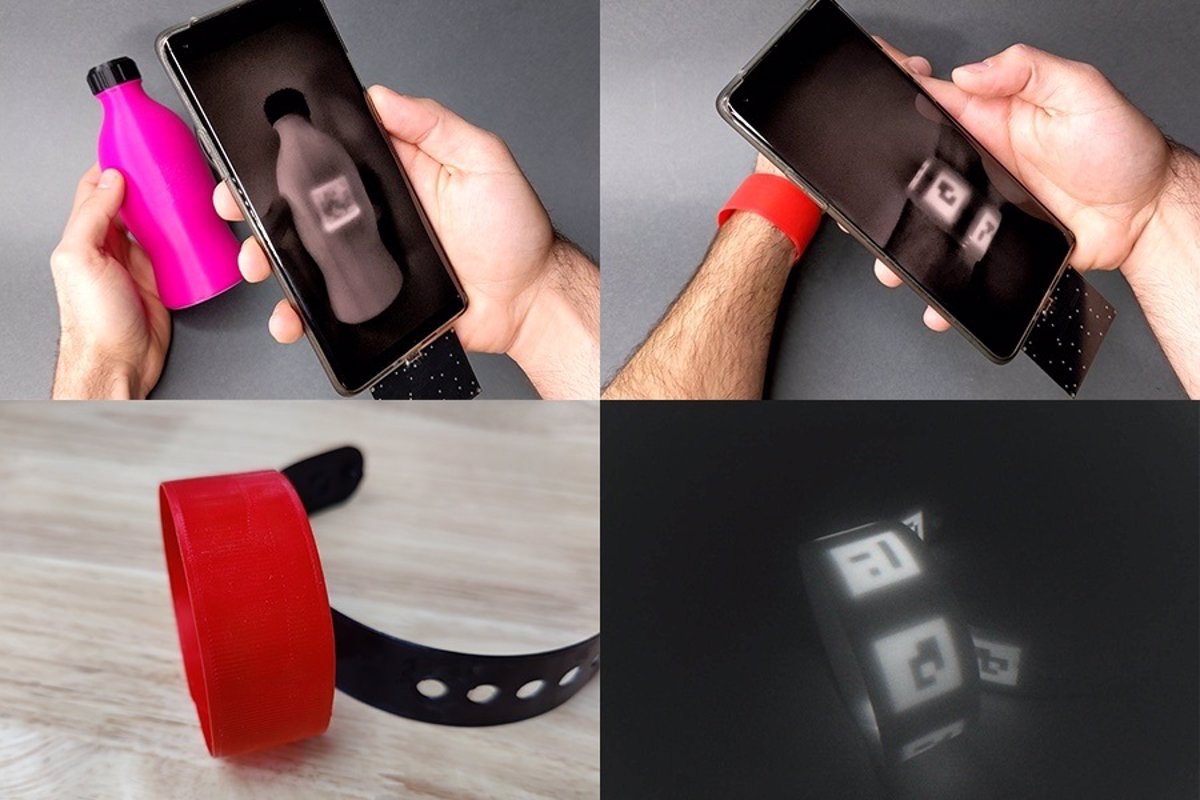Researchers of the Massachusetts Institute of Technology (MIT) have presented BrightMarker, a system of invisible labeling that hides in 3D printed objects through fluorescent filaments.
Typically, labels displayed on products, communications, advertisements, or points of information appear on form of QR code or Quick Response. To access the content of these codes, you simply have to scan them with, for example, a smartphone camera.
However, although its use is widespread, it supposes certain risk when they are physically located in public spaces, since these QR codes can be modified or replaced and, when scanned, they can lead to dangerous links.
In this framework, in order to use a safer labeling option, as well as aesthetic, BrightMarker has been designed a system devised by researchers at the MIT Computer Science and Artificial Intelligence Laboratory, which is based on a manufacturing method that uses fluorescent filaments to embed “easily traceable” invisible markers into colored 3D printed objects.
Specifically, as MIT has reported in a statement on its website, it is a “potential” option that is designed to be used in areas of motion tracking, virtual reality or object detection.
This system includes an invisible fluorescent label hidden in objects such as a ball, a box or a piece of equipment, which have been manufactured with a 3D printer.
To do this, just place the label in the layout of the object to be printed using the specific ‘software’ that the MIT team has developed, which can be introduced into 3D modeling programs with Blender.
Once the label is placed on the object, it must be 3D printing using fluorescent filaments inserted in the printer. These filaments will only be seen on the label and, therefore, will be will print invisibly and embedded in the object itself. In fact, as MIT shows in an illustrative video, the labels they look like a glow-in-the-dark QR code.
In this way, the label may not be modified or replacednor can it be added to previously existing elements or objects.
Likewise, when using fluorescent materials, the developers have explained that the tag will emit light at “a specific near-infrared wavelength.” That is, they can only be seen with infrared cameras and “high contrast”.
For this reason, the researchers have also designed two dockable devices –one for the ‘smartphones’ and another for viewers augmented reality (AR) and virtual reality (VR)– with which a BrightMarkers label can be detected and scanned.
With all this, as MIT researcher Mustafa Doga Dogan has underlined, the BrightMarkers can serve as a “gateway to ‘ubiquitous metadata’ in the physical realm.” This is the concept of embedding metadata directly into physical items.
In this way, they could get into market products to help in the process of the manufacturers or for the consumers themselves to verify if a product has certain characteristics or is original.
But, in addition, the development team has also exemplified other use cases as the traceability in virtual reality environments. Thus, BrightMakers could be embedded in portable devices that are located on the extremities of the users’ bodies, such as bracelets, to digitize the user’s movements through the detection devices.
This option could be used both for playing video games, and for using the precise movement recorded to bring animated characters to life.
According to another of the researchers from MIT, Raúl García-Martín, “in a In the future dominated by the AR and VR paradigm, object recognition, tracking and traceability is crucial to connect the physical and digital worlds.
